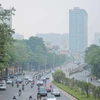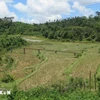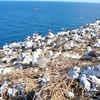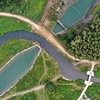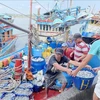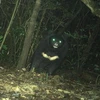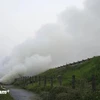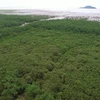A five-year-old leopard, listed in Vietnam's Red Book of critically endangered species, was transferred to the Cat Tien National Park in Dong Nai province on May 31.
The leopard has been living in a protected area at the Cu Chi Rescue Centre for two years.
In late 2008, the Forest Protection Division in Vinh Long province rescued the animal from a private household, where it was being illegally kept.
The leopard was then sent to the centre's Wildlife Rescue Station for rehabilitation, according to Nguyen Chuong, deputy director of the centre.
Chuong said the rescue station for large cats in the Cat Tien National Park offered better facilities for rehabilitation of leopards before they are released into the wild.
In late 2006, the Forest Protection Division in HCM City set up the rescue station with financial and technical assistance from the HCM City-based nonprofit organisation Wildlife at Risk (WAR).
The station, the first of its kind in southern Vietnam, has rescued more than 2,000 animals of nearly 40 endangered species, including pangolins, turtles, gibbons and lorises. Animals in good health have been released into the wild./.
The leopard has been living in a protected area at the Cu Chi Rescue Centre for two years.
In late 2008, the Forest Protection Division in Vinh Long province rescued the animal from a private household, where it was being illegally kept.
The leopard was then sent to the centre's Wildlife Rescue Station for rehabilitation, according to Nguyen Chuong, deputy director of the centre.
Chuong said the rescue station for large cats in the Cat Tien National Park offered better facilities for rehabilitation of leopards before they are released into the wild.
In late 2006, the Forest Protection Division in HCM City set up the rescue station with financial and technical assistance from the HCM City-based nonprofit organisation Wildlife at Risk (WAR).
The station, the first of its kind in southern Vietnam, has rescued more than 2,000 animals of nearly 40 endangered species, including pangolins, turtles, gibbons and lorises. Animals in good health have been released into the wild./.



